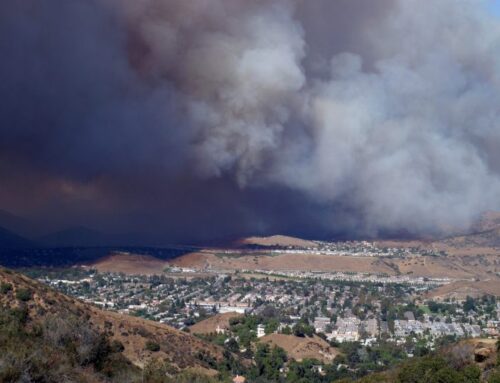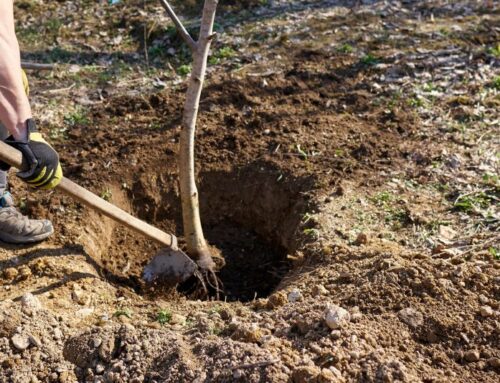As winter chills give way to spring warmth, Mother Nature is rejuvenated with flushes of vibrant green. Many people anticipate this hallmark of spring, the return of lush greenery as trees unfurl their fresh leaves. Let’s discover more about when and how trees leaf out, explore early and late bloomers, address concerns about when leaves are absent, and more!
How Do Trees Know When To Bloom/Leaf Out?
The exact timing is influenced by a combination of environmental factors and the genetic makeup of each tree species. Trees receive environmental signals to grow new leaves when warm weather returns after cold spells and when daylight hours become longer. This is more applicable for deciduous trees, those that shed their leaves in winter, although evergreen trees can experience increased growth rates too in spring.
In temperate regions, leaf buds start unfolding between late March and early June. However, this can vary based on geographic location, climate, and the specific tree species. Trees in warmer climates tend to leaf out sooner than those in cooler regions.

Early Blooming/Sprouting Tree Species:
Trees have evolved to synchronize their leaf growth with the changing seasons. The key trigger is the increase in both temperature and daylight hours during spring. As the days grow longer and sunlight becomes more abundant, trees undergo hormonal changes, promoting the development of buds and leading to the unfurling of new leaves. This activates leaf growth at the right time to take advantage of weather conditions optimal for photosynthesis.
Early Blooming/Sprouting Tree Species
Some tree species are eager to welcome spring, putting out their leaves at the earliest signs of warmth. Here are some examples:
- Willow (Salix spp.): Willows are often among the first to produce leaves in spring. Their slender, elongated leaves are a distinctive feature.
- Red Maple (Acer rubrum): Red maple trees are known for their early leafing out, and they often display reddish leaves as they emerge in spring.
- Poplar (Populus spp.): Poplar trees, including species like quaking aspen (Populus tremuloides), are known for their early leaf development.
- Silver Maple (Acer saccharinum): Silver maples are among the early leafing deciduous trees, and their leaves have a distinctive silvery undersurface, hence their name.
- Birch (Betula spp.): Birch trees, especially the river birch (Betula nigra), are known for their early leaf emergence, often with a yellow-green hue.
Late Blooming/Sprouting Tree Species:
Some trees take a little longer to awaken from their winter slumber. Here are some examples:
- Oak (Quercus spp.): Many oak species tend to leaf out later in spring. A lot of oaks are known for their distinctive lobed leaves.
- Beech (Fagus spp.): Beech trees, such as the American beech (Fagus grandifolia), often leaf out later compared to some other deciduous trees.
- Black Walnut (Juglans nigra): Black walnut trees are known for their pinnately compound leaves and may leaf out later in spring.
- Redbud (Cercis spp.): While some redbud species bloom early, their leaves may emerge later in spring, following the flowering period.
- Tulip Tree (Liriodendron tulipifera): The tulip tree, also known as yellow poplar, may leaf out a bit later in spring after producing distinctive tulip-shaped flowers.
What If Your Tree Is Not Growing Leaves In Spring?
With so many other trees putting out new leaves, the absence of leaves on your tree can raise concerns. While it’s understandable to worry, your tree might be slower to respond due to its species or microclimate. Small differences in things like sunlight exposure or wind chill can cause some trees to leaf out later than others and aren’t always an indicator of poor health. But there can be other reasons, such as environmental stress, disease, or inadequate sunlight. To address potential issues, consider arborist consulting to identify the specific problem and find appropriate solutions. Early intervention can be pivotal in ensuring the health of your tree.
Which Trees Grow Back Their Leaves the Fastest?
The speed at which trees grow back leaves varies among species. Fast-growing deciduous trees, such as poplars (Populus spp.) and certain willows (Salix spp.), are known for their rapid leaf development. These trees can transform seemingly barren branches into a lush canopy in a relatively short period.
Do Trees from Warm Areas Grow Back Leaves Sooner?
Indeed, they do! Trees, even of the same species, often leaf out sooner in warmer climates due to milder winters and more consistent temperatures. The warmth accelerates the awakening of dormant buds so that trees can start absorbing sunlight for new growth.

What Else Triggers Leave to Grow Back?
Beyond seasonal changes in temperature and daylight, other factors affect the leafing out process. Adequate soil moisture, nutrient availability, and overall tree health all contribute to leaf development. On the other hand, stressors such as pests, diseases, or nutrient deficiencies can hinder leaf growth. Providing proper tree health care and maintenance ensures that trees are well-prepared to unfurl and show off their leaves come springtime!





